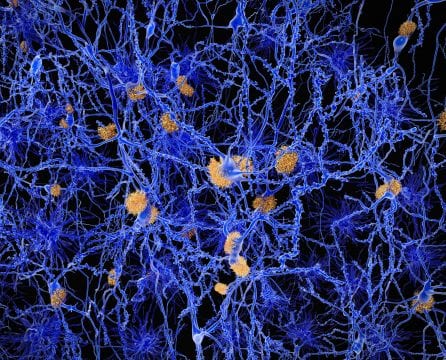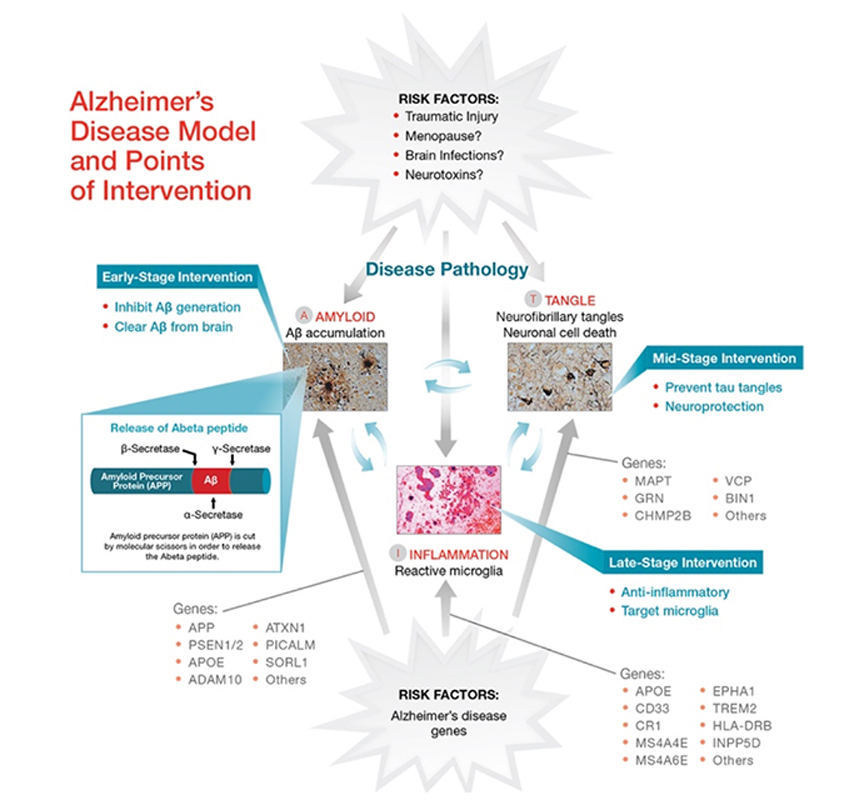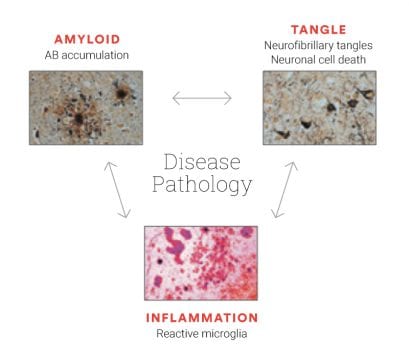The pathology of Alzheimer’s disease includes amyloid plaques, neurofibrillary tangles, and inflammation.

In recent years, with the help of research sponsored by Cure Alzheimer’s Fund, a scientific consensus has begun to form about the origin of Alzheimer’s disease. It is believed that the disease develops as a vicious cycle of Abeta peptide accumulation, nerve cell death, and inflammation … which is followed by additional nerve cell death. Genetic and environmental factors can trigger Abeta accumulation, tau tangle formation, and inflammation. Once one part of the pathology is in place, it then acts as a trigger for the other parts; for example, Abeta accumulation can lead to increased inflammation, and vice versa. This cycle then continues, causing more and more damage and nerve cell death. Eventually, this damage becomes so severe that the patient begins to experience a loss in cognitive function.




